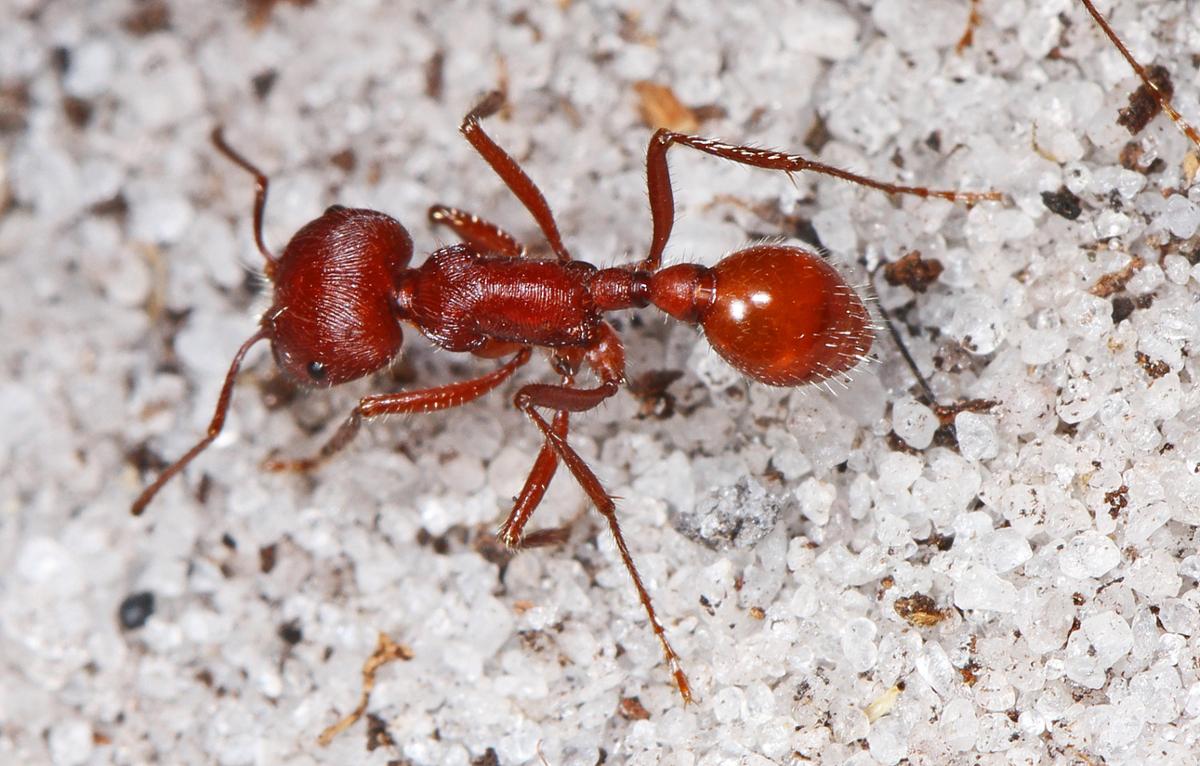
Ever wondered about the tiny architects that roam our backyards, constructing complex cities beneath our feet? Ants, those little critters, are more than just picnic invaders; they're nature's unsung heroes, boasting incredible strength, teamwork, and survival skills. From their fascinating social structures to their ability to lift objects many times their own weight, ants have intrigued scientists and nature lovers alike. But what else is there to these miniature marvels? Are they really as organized as they seem? Buckle up, because we're about to uncover 12 mind-blowing facts about ants that will make you see these tiny creatures in a whole new light. Ready to be amazed by the world of ants? Let's dive into the intriguing universe of nature's skilled architects!
Key Takeaways:
- Ants are incredible architects, building complex underground colonies with specialized chambers for nurseries, food storage, and waste disposal. Their teamwork and communication skills are vital for their impressive construction projects.
- Ants play diverse roles in the ecosystem, from aerating the soil and dispersing seeds to engaging in warfare and even farming other insects. Their resilience, strength, and unique behaviors make them fascinating creatures in nature.
Ants Build Complex Structures
Ants are renowned for their ability to construct intricate homes and networks. These tiny architects create elaborate underground colonies that can extend several meters deep. Each colony features specialized chambers for nurseries, food storage, and even waste disposal. Their construction projects are not only impressive for their complexity but also for their efficiency, showcasing ants' remarkable teamwork and organizational skills.
- Ant colonies can house millions of individuals, each playing a specific role in their society. Workers, soldiers, and the queen all work together to ensure the colony's survival and growth.
Communication is Key in Ant Societies
Ants communicate using chemicals called pheromones. This chemical language allows them to alert each other about dangers, find food sources, and even help lost members find their way back to the colony. Their sophisticated communication system is vital for coordinating the complex tasks required to maintain and defend their colonies.
- When an ant finds food, it leaves a pheromone trail back to the colony, guiding other ants to the source.
Ants Farm Other Insects
Not all ants just gather food; some have taken agriculture to a new level. Certain species, like the leafcutter ant, cultivate fungi in their colonies, feeding them with freshly cut leaves. These ants have a symbiotic relationship with the fungi, which in turn provides them with a constant food source.
- Leafcutter ants are so efficient at cutting leaves that they are considered one of the world's top herbivores.
Ants Have Super Strength
Despite their small size, ants are incredibly strong creatures, capable of lifting and carrying objects many times their own body weight. This strength allows them to transport food, build their colonies, and fend off predators or rivals.
- An ant can lift and carry objects up to 50 times its own body weight.
Ants Play a Crucial Role in the Ecosystem
Ants are vital for maintaining healthy ecosystems. They aerate the soil, allowing water and oxygen to reach plant roots. Ants also help in seed dispersal, spreading plant seeds throughout their environments, which contributes to a diverse and healthy ecosystem.
- By moving seeds, ants promote the growth of a wide variety of plants, contributing to biodiversity.
Ants Have Been Around for Millions of Years
Ants are among the oldest creatures on Earth, with fossil records dating back over 100 million years. They have survived mass extinctions and adapted to countless changes in their environments, making them one of the most resilient and successful insect groups.
- Scientists have discovered ant fossils that are over 100 million years old, indicating their long presence on Earth.
Ants Can Create Their Own Medicine
In a fascinating display of natural ingenuity, some ant species have been observed collecting medicinal plants and incorporating them into their nests. This behavior suggests ants understand the antibacterial properties of certain plants, using them to protect their colonies from diseases.
- Certain ant species use resin from trees as an antibiotic to safeguard their colonies against bacteria and fungi.
Ants Engage in Warfare
Ant colonies often engage in battles over territory and resources. These conflicts can range from small skirmishes to large-scale wars, involving thousands of ants. The outcomes of these battles can significantly impact the survival and expansion of ant colonies.
- Ant wars can last for months, with colonies employing strategies and tactics to outmaneuver their opponents.
Ants Can "Farm" Animals
Besides farming fungi, some ant species also "tend" to other insects, such as aphids. They protect these insects from predators and care for them, in return for a sweet substance called honeydew that the aphids produce.
- Ants and aphids have a mutualistic relationship, where both parties benefit from their interaction.
Ants Have a Unique Way of Dealing with the Dead
Ants are very hygienic and have specific protocols for dealing with their dead. They designate certain areas as cemeteries and will carry their deceased comrades away from the colony to prevent disease.
- This behavior helps maintain the health and cleanliness of the ant colony, showcasing their complex social structure.
Ants Can Navigate Using the Sun
Ants have an incredible sense of direction, thanks in part to their ability to detect and use the sun's position in the sky as a navigational tool. Even on cloudy days, ants can use the polarized light from the sun to find their way.
- This skill allows ants to travel long distances from their colony without getting lost, ensuring they can find food sources and return safely.
Ants Show Altruistic Behavior
In times of danger or to achieve a common goal, ants exhibit altruistic behavior, sacrificing their own well-being for the colony's benefit. This selflessness is a key factor in the survival and success of ant societies.
- Examples of altruistic behavior include ants forming bridges with their bodies for others to cross and some individuals acting as live food storage for the colony.
A Final Nod to Nature's Tiny Engineers
Ants, nature's tiny engineers, showcase an incredible world of strength, teamwork, and innovation right under our feet. From their remarkable ability to lift objects many times their own weight to their sophisticated social structures and communication methods, these tiny creatures offer big lessons in efficiency and community. Their environmental contributions, from aerating the soil to controlling pest populations, highlight their crucial role in our ecosystems. As we've journeyed through the fascinating facts about ants, it's clear they're not just simple insects but key players in the tapestry of life. Their resilience and adaptability serve as a reminder of the wonders of the natural world and the intricate connections that sustain it. Next time you spot an ant trail, take a moment to appreciate these small but mighty architects of the earth.
Frequently Asked Questions
Was this page helpful?
Our commitment to delivering trustworthy and engaging content is at the heart of what we do. Each fact on our site is contributed by real users like you, bringing a wealth of diverse insights and information. To ensure the highest standards of accuracy and reliability, our dedicated editors meticulously review each submission. This process guarantees that the facts we share are not only fascinating but also credible. Trust in our commitment to quality and authenticity as you explore and learn with us.


